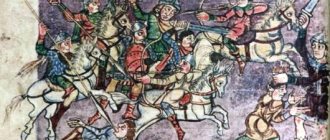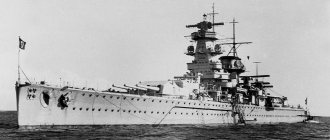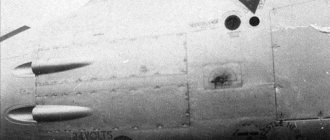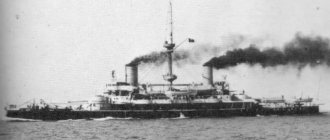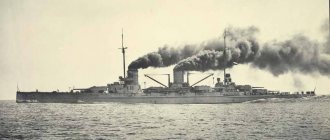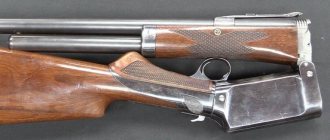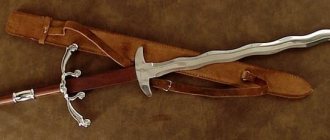The Middle Ages are roughly ten centuries from the chaos of the fall of Rome in the 5th century to the rise of feudalism and the Christian Church by the 15th century. Knighthood in the Middle Ages was fully involved in the process of change and was one of the driving forces of progress. A medieval knight, fluent in combat skills and following the rules of the code of honor, often became the hero of folk legends, an example of courage, honesty, generosity and fidelity to duty.
A little history
The stories that have come down to contemporaries from those “dark times” are, of course, greatly simplified, often embellished and have little in common with real life. Knights, the elite of the feudal nobility, are the most romanticized, legends about them are very popular, but, unfortunately, there is more fiction than truth in them.
Feudal fragmentation
The beginning of the Middle Ages was characterized by particular cruelty, constant wars and appalling poverty of the population . It was a world where every feudal lord was forced to defend his castle and the surrounding lands from raids with arms in hand, and at the same time sometimes attack his neighbor in order to improve his own well-being.
Mastering the art of war from a young age, landowners became fighting professionals, commonly called knights. The right of the strong was put at the forefront, brute force and its decisive use were the best qualities of a warrior; at first there was no talk of knightly honor and morality.
The development of feudalism and the creation of armies
With the development of agriculture and crafts, some feudal lords became rich, increased their influence in their region and united more modest landholdings around themselves. The first states—monarchies—emerged. The owners of the annexed lands took an oath to the king and pledged to serve in his army, bringing into it their own detachments of archers and foot soldiers from among their servants.
Gradually, the influence of the church increased in Europe, and Christian morality played an increasingly important role within European society, lowering the bar of violence.
Crusades and knightly orders
In the 11th century, Europeans, seeking to prove the superiority of their religion, began an era of Crusades against "infidel" non-Christian countries . These times can be considered the highest point in the development of knightly service. Under the auspices of the Catholic Church, knightly orders were created everywhere - organizations that had much in common with monastic orders both in terms of structure and in terms of obedience. The largest and most famous were the Templar Order, the Teutonic Order, the Livonian Order, the Order of Alcantara and others.
Members of the orders took vows of fidelity to the church, abstinence and poverty. They took part in the Crusades against the pagans of the northern countries, as well as against Muslims in the Middle East and southern Europe, and protected pilgrims traveling to the Holy Land.
Changes at the end of an era
Many knightly orders accumulated considerable wealth through plunder, as well as through trade, sometimes usury, and always the brutal exploitation of the dependent peasants of their lands. Therefore, at the end of the Middle Ages, knights had serious political influence in their own states.
But with the growth of prosperity and strengthening of power, the military component of the life and service of chivalry gradually lost its significance. Rich feudal lords paid the king a ransom for the right not to appear for service in person. The money was used to create an army of mercenaries, and a new class of professional military began to form.
Knights of the late Middle Ages began to demonstrate knightly courage and valor, the art of wielding a spear and a sword at tournaments - horseman competitions, which were very popular and attracted large numbers of spectators.
Knighting
for knighting from childhood . From the young age of 8 they were left at the court of the feudal lord to serve as a page. During the training process, the boy gradually mastered the skills of hand-to-hand combat, horse riding, and wielding a sword and spear.
In addition, the young page learned to read and write in his native language and Latin, as well as sing and dance. The future knight carefully studied etiquette in order to behave correctly at court in the presence of high-ranking persons.
A teenager who succeeded in his studies could become a knight's squire. His duties included serving his master, accompanying him everywhere, caring for horses, and cleaning armor and weapons.
By the age of 20, the young man who had mastered this science was ready for the rite of knighting. He spent the night preceding the important event in fasting and prayer, purifying his soul, while the priest of the local church blessed the sword and left it on the altar until the morning. At dawn, those entering the path of service were supposed to confess, after which a ceremony was held.
The future knight knelt before his master, who, in turn, touching each shoulder of the young man with a consecrated sword, proclaimed him a noble knight. After this, the initiate usually took a vow of service.
Three Types of Ministry
Medieval knights took three types of vows: they swore an oath to serve either God, the common people, or a beautiful lady. The division, of course, is conditional, but nevertheless meant the following:
- Serving the people is an obligation to protect one's lands from enemies, as well as to help the poor. Example - Sir Gawain from the legends of King Arthur.
- Serving the Lord meant devotion to God and the church, the desire to always act on the side of good and bright forces. The example is Sir Percival.
- Serving a lady is the worship of one chosen woman, and in general a gallant and reverent attitude towards everyone else. A prominent representative is Sir Lancelot.
Admiration for the beautiful lady originates from the cult of the deification of the Virgin Mary as the path to salvation for man. It is interesting that the reverent attitude towards the Holy Virgin contrasted sharply in the Middle Ages with the attitude towards women in life, which placed them in a strictly subordinate position and considered them to be third-class creatures. If girls of a noble family were still somehow valued, among the lower classes they were often considered a source of evil and sin.
Feudal relations
The world in the medieval understanding was eternal and unchanging, and in it the dominance of the sovereign lords and the knightly class seemed just as eternal and unchanging. Only that which relates to the life and activities of knights is beautiful and moral; everything else is ugly and immoral. This was a common judgment of that time, and, it must be said, it was partly true, since in this class a certain semblance of culture had the opportunity to be preserved and developed. The simple peasant knew nothing but the endless struggle for existence.
The lord had fairly broad rights over his peasants and much less over his vassals, however, he himself had to fulfill a number of specific duties. Firstly, in order to preserve his way of life, he simply needed to fully protect both his peasants and his vassals. This applies to military protection from external or internal enemies by organizing the defense of a castle, city or fief, and legal protection from the attacks of another lord, church or even king. In addition, for the service the lord was obliged to provide the vassal with a fief (flax), i.e. estate, and to the peasant - an allotment of land, but he could not take them away provided that the vassals and peasants conscientiously performed their service. Also, the lord had to help his vassals ransom from captivity and give a knightly education to their sons. In continental Europe, a lord could not demand service from the vassals of his vassal - this was partly practiced only in England. On the other hand, it must be taken into account that in such a society almost all feudal lords (with the exception of the king and the smallest knights) were at the same time someone’s lords and someone’s vassals. Therefore, almost every lord simultaneously performed the duties of a vassal in relation to a higher-ranking lord.
Weapons and armor
The knights went on a campaign accompanied by their servants - foot soldiers, convoys and archers . Of course, the knight was the most effective and best-protected combat unit among them. Plate armor, weapons and a shield, as well as a war horse were very expensive, so only a rich man who usually had his own estate, which brought a good income, could be a knight.
A knight's equipment is a very complex and well-thought-out system of armor and weapons. In the process of developing crafts and improving the skills of blacksmiths and gunsmiths, armor for warriors turned into genuine works of art, consisting of a huge number of parts.
Dressing in armor can be described as follows: a special jacket made of several layers of dense fabric, the so-called gambeson, was put on top of ordinary clothes. The next layer was metal chain mail, designed to close the gaps between the forged armor plates. Then the legs and arms were covered with armor, and finally, a cuirass was attached to the chest and back, and the head was protected with a helmet.
In addition, knights used shields in battle. Metal or wooden, bound with iron, they were often decorated with the family coat of arms of the owner. The main weapon of a medieval knight was a forged sword. It was worn attached to the belt on the left side, and a dagger was usually located on the right. In addition to these types of weapons, spears, clubs, battle axes and even hammers were also used in those days.
Classification
In the Middle Ages, the knightly brotherhood was represented by two classes:
- Religious chivalry. Consisted of warriors who took a religious vow. For example, the Knights Templar fought against Arabs and representatives of other religious groups.
- Secular knighthood. This class consisted of warriors in the service of high nobility or the king himself.
To become a knight, you had to be not only physically strong and brave, but also a very rich person. Thus, a strong war horse and full knightly uniform (helmet, armor, spear, shield and sword) cost as much as a herd of cows in one village.
Code of Chivalry
Medieval literature extolled the ideas and atmosphere of the ancient Roman Empire. In the 13th century in France, for example, Vegetius’s treatise on the art of war “De Re Militari” was translated, and authors of that time later cited it more than once as a model.
Partly from these ideas, partly under the influence of Christian commandments, an unwritten Code of Honor was formed - a kind of bible of the knight. Each of them considered compliance with the rules as their sacred duty, and violation as an indelible shame. The requirements of the code were very noble: serve God and the king, protect the disadvantaged, show mercy to the defeated enemy. At the same time, however, their own peasants were not considered dispossessed, and the feudal lords sometimes treated them rudely and cruelly.
The main virtues that medieval knights were recommended to possess were the following:
- faithful service at court;
- assistance to widows and orphans;
- unselfishness;
- respect for the honor and dignity of comrades;
- inevitable acceptance of a challenge from an equal;
- full fulfillment of the undertaken obligation;
- honesty.
To conclude this message about chivalry in the Middle Ages, it should be mentioned that Miguel de Cervantes, a Spanish writer, satirically described the ideas of chivalry in his novel about Don Quixote in the 16th century. The main character of the work takes the principles of romantic service too literally and constantly finds himself in awkward and funny situations. The most famous of them - the battle with windmills - has become, perhaps, a symbol of an idealistic worldview and the end of the era of the “knight on a white horse”, which, to hide it, many beautiful ladies are still secretly waiting for.
Test on the topic
- /5
Question 1 of 5Where did chivalry originate?
Start test
Hall of Fame
To get here, take the test.
- Katya Pavilchenko
5/5
- Zheka Kortashov
5/5
- Angelina Oblomey
3/5
- Pavel Parshin
5/5
- Andrey Yakovlev
5/5
